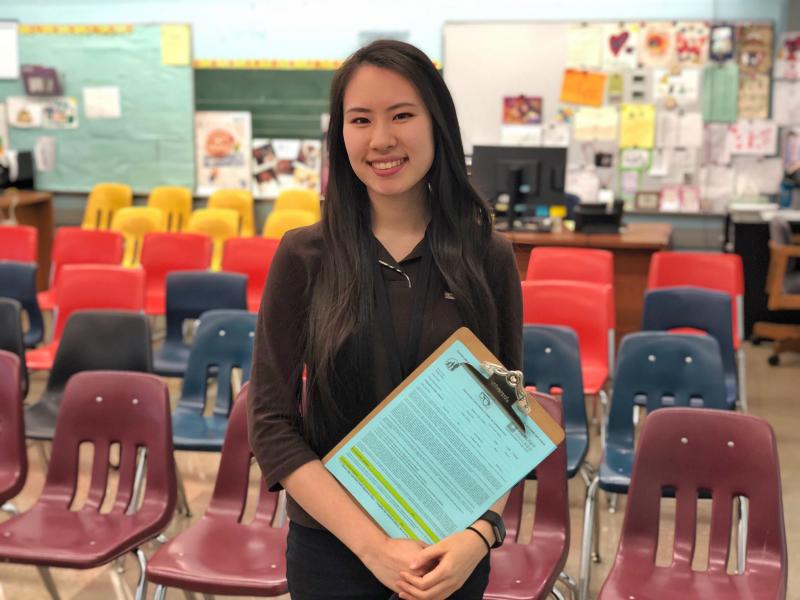Health Equity for All

"¿Mis hijos necesitan un seguro para tener un examen de la vista?" Do my kids need insurance to have an eye exam?
"Est-ce que je peux recevoir des lunettes ici?" Can I get glasses here?
These are words that I cannot understand but often hear in the registration room of the Illinois Eye Institute at Princeton Vision Clinic. This pediatric clinic in the South Side of Chicago provides vision care to many of the underserved communities of the Windy City. Children and their families from these under-resourced neighborhoods often face significant financial and language barriers in accessing healthcare services. With a multitude of funding sources and bilingual staff, this clinic addresses these challenges to help children receive the care they need.
Serving alongside the dedicated staff has given me feelings of fulfillment but also at times helplessness. I have felt that even after brushing up my rudimentary Spanish I learned in secondary school and using a cheat sheet of frequently used translated phrases, there was still a disconnect between the patients and me. If their responses veered from the standard expected dialogue, I would become lost and then rescued by my Spanish speaking counterparts. While appreciative of their support, I also hoped that I would be able to more fully serve patients. Little did I know, that opportunity would present itself when the next patient walked into the registration room.
"Eye doctor? My son. Glasses?" inquired an anxious woman while pointing to a young boy.
Glancing at the bag she carried that advertised the name of a grocery store in Chinatown, I quickly cleared my throat and responded,'您讲国语吗?" Do you speak Mandarin? This simple but pivotal question prompted a shift in her demeanor as she visibly relaxed and nodded. Welcoming her and her son to the clinic, I grabbed a vision exam consent form, sat down with them, and began translating. From explaining the purpose and possible side effects of pupil dilation to asking about her son's medical history, it surprised me how smoothly the dialogue flowed. But that wasn't to say there weren't a few bumps along the way. I had forgotten how to say pupil and glaucoma in Mandarin, but with the help of a Mandarin-English dictionary mobile app, we worked through the consent form together.
Finished with the paperwork, I held the little boy's hand as we walked down the hall to the entrance testing room. Conversing in Mandarin, I asked him if he was excited about visiting the eye doctor. He began enthusiastically jumping up and down and replied that he couldn't wait to get glasses because he was having a hard time seeing at school. His mother echoed the same sentiment and also shared some of the difficulties she had encountered while trying to get treatment for her son. Her lack of stable financial resources compounded by her undocumented status and unfamiliarity with English created a daunting challenge to access and navigate healthcare services for her family. Moved by her story, I researched online and found that many of the other 600,000 Asians who call Chicago home also face similar barriers to receiving care.
Asian Americans have been historically overlooked when it comes to healthcare equity research. The few studies that have examined Asian Americans found racial disparities in healthcare service utilization rates and health outcomes. As this population includes many foreign-born residents, cultural and linguistic differences form significant barriers that need to be addressed. To help reduce these health disparities, I am in the process of translating the vision exam consent form, which currently exists in English and Spanish versions, into Mandarin in order to reach underserved Chinese communities. With many Mandarin speakers living in Chinatown less than four miles away from the clinic, there is potential to make a difference and take a further step forward toward health equity for all.

This blog post was written by 2018-19 member Angela Yim.
Angela is a Patient Navigator at Illinois Eye Institute at Princeton Vision Clinic.
